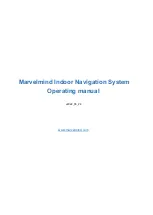
2-12
Installation
2Unpacking to Installation
2.2.3 Installation procedures
The installation procedure of the robot arm is shown below.
Fig.2-4:Installation dimensions
1) The robot installation surface has been machine finished. Use the installation holes (6-
φ
9 for RH-
3CRH, 4-
φ
9 for RH-6CRH) opened at the four corners of the base, and securely fix the robot with the
enclosed installation bolts (hexagon socket bolts). (Recommended tightening torque: 26.5 N•m)
2) Install the robot on a level surface.
3) It is recommended that the surface roughness of the table onto which the robot is to be installed by
Rz25 or more. If the installation surface is rough, the contact with the table will be poor, and positional
deviation could occur when the robot moves.
4) When installing, use a common table to prevent the position of the devices and jigs subject to robot
work from deviating.
5) The installation surface must have sufficient strength to withstand the arm reaction during operation,
and resistance against deformation and vibration caused by the static (dynamic) load of the robot arm
and peripheral devices, etc.
6) If you operate the robot at a high speed, reaction forces are applied to the installation stand by the
robot's operation. Make sure that the installation stand on which the robot is placed has sufficient
strength and rigidity.
shows the maximum reaction force (design values) that may be applied
to an installation stand. Please use these values as reference when designing the installation stand.
㪪㫇㫉㫀㫅㪾㩷㫎㪸㫊㪿㪼㫉㩷
㪋㪄㪤㪏㫏㪊㪇
㪧㫃㪸㫀㫅㩷㫎㪸㫊㪿㪼㫉㩷
䌆
䌈
䌆
䌖
䌆
䌈
䌆
䌈
䌍
䌌
䌍
䌌
䌆
䌖
䌍
䌔
䌆
䌈
RH-3CRH
RH-6CRH
RH-3CRH:6.5
RH-6CRH:8.5
㻟㻜
㻥㻜
㻝㻡
㻝㻞㻜
㻢㻙䃥㻥㻌㼔㼛㼘㼑
㻢
䃥㻢㻴㻣
㻠㻡
㻝㻟㻡
㻝㻠㻜
㻝㻢㼼㻜㻚㻜㻡
㻜
㻗㻜㻚㻜㻝㻞
㪈㪈㪇
㪍
㱢㪍㪟㪎
㪈㪇㪌
㪋㪌
㪈㪌㪇
㪋㪄㱢㪐ⓣ
㪈㪍㪐
㪈㪊㪌
㪍㪇
㪇
㪂㪇㪅㪇㪈㪉
hole
<Top view of the base section>
Содержание MELFA RH-3CRH Series
Страница 2: ......
Страница 100: ...Appendix 88 Configuration flag 6Appendix ...
Страница 101: ......
















































